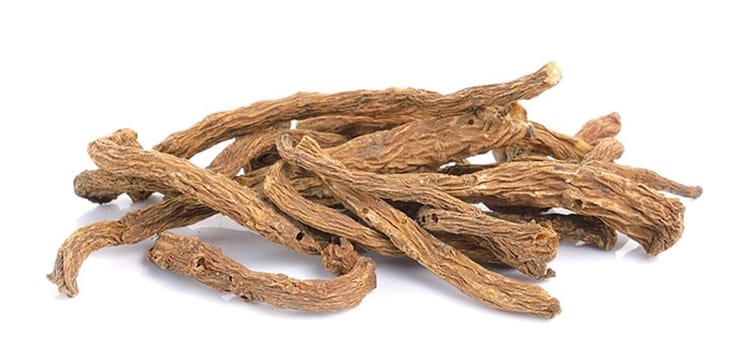BACKGROUND
Ingredient Type: Botanical
Also Known As: The genus Angelica includes over 60 different plant species. A few Angelica species commonly used in traditional medicinal preparations are Angelica archangelica, Angelica gigas, Angelica dahurica, and Angelica sinensis (1). Each species has a variety of names; Angelica gigas, for example, is known as Korean angelica while Angelica sinensis is often called Dong quai.

Legend has it, that God’s Archangel appeared to a 14th-century monk in a dream, and revealed to him knowledge about an herb that could cure the bubonic plague. That herb, which also coincidentally blooms on the Archangel’s feast day, was Angelica archangelica (2). Angelica’s medicinal virtues were praised by numerous Medieval writers, “and the name itself, as well as the folklore of all North European countries and nations, testify to the great antiquity of a belief in its merits as a protection against contagion, for purifying the blood, and for curing every conceivable malady” (3).
Angelica root comes from a perennial plant native to Asia. It tends to grow in riparian areas and around rocky shrubs, and the root is thinly sliced and sun-dried during harvest. It has been used medicinally as far back as 400 BC in Ancient China. It was popularized in the 12th Century by a famous military physician who believed it could warm the body and purge it of negative influences.
Angelica root is used in health supplements today to help soothe aches and pains, as well as for detoxification.
MORE COMING SOON
In the meantime see the WebMD entry for angelica or the Penn State Hershey Health Information Library entry for dong quai for more information.
REFERENCES
- Sarker SD, Nahar L. Natural medicine: the genus Angelica. Curr Med Chem. 2004;11(11):1479-1500. http://www.ncbi.nlm.nih.gov/pubmed/15180579. Accessed March 11, 2018.
- Grieve M. A modern herbal. Dover Publications Inc. 1971 republication of a 1931 original work.
- Bhat ZA, Kumar D and Sha MY. Angelica archangelica Linn. is an angel on earth for the treatment of diseases. Int J of Nutri, Pharma, Neurol Diseases. 2011;1(1):36-50. doi:10.4103/2231-0738.77531.









